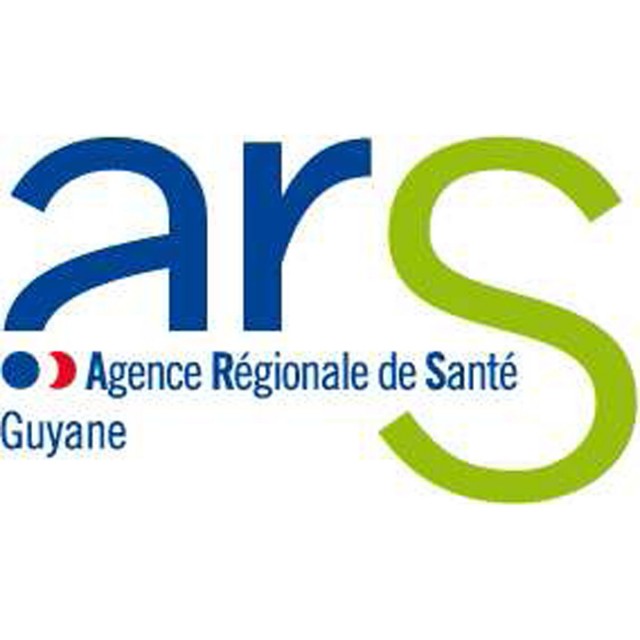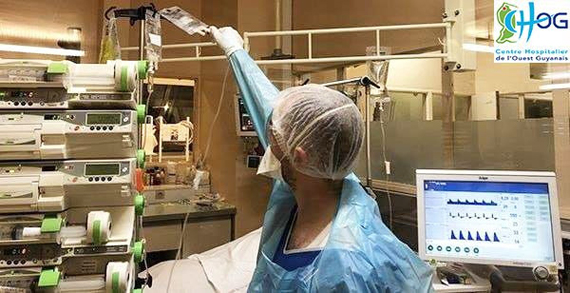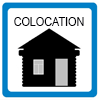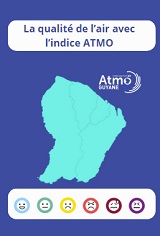Blada.com
vendredi 02 janvier
Boîtes aux lettres
Courrier des lecteurs
Petites annonces
Emploi / Formation
Covoiturage
Infos citoyennes
Infos citoyennes
25/01/21
Obésité, diabète et HTA, principaux facteurs d’aggravation du Covid-19 en Guyane
 La cellule Guyane de Santé publique France a défini les profils-types des personnes positives au Covid-19 admises en réanimation ou décédées. Le profil type d’un patient admis en réanimation en Guyane est un homme âgé de 45 à 64 ans et présente une ou plusieurs comorbidités, les plus fréquentes étant l’hypertension artérielle, le diabète et le surpoids/obésité.
La cellule Guyane de Santé publique France a défini les profils-types des personnes positives au Covid-19 admises en réanimation ou décédées. Le profil type d’un patient admis en réanimation en Guyane est un homme âgé de 45 à 64 ans et présente une ou plusieurs comorbidités, les plus fréquentes étant l’hypertension artérielle, le diabète et le surpoids/obésité.
La personne décédée en milieu hospitalier est en général un homme âgé de plus de 60 ans présentant au moins 3 comorbidités, les principales étant hypertension artérielle, diabète et surpoids/obésité. Ces conclusions ont amené l’ARS et les professionnels de santé à ajuster les recommandations nationales de vaccination pour les adapter au mieux au terrain guyanais. C’est ainsi qu’en plus des cibles nationales, les Guyanais cumulant au moins deux de ces comorbidités peuvent désormais demander une prescription médicale de vaccination. Un suivi fin de la demande et des stocks sera assuré en lien avec les représentants des médecins.
 En Guyane, qui sont les patients atteints de Covid-19 et admis en réanimation et ceux décédés à l’hôpital alors qu’ils étaient porteurs du Covid-19 ? Pour répondre à ces questions cruciales, la cellule régionale de Santé publique France a repris les dossiers des 74 personnes décédées à l’hôpital à la date du 13 janvier et de 131 personnes admises en réanimation pour lesquelles les caractéristiques étaient disponibles. Les épidémiologistes en ont livré les conclusions à l’ARS, ce qui a permis, la semaine dernière, à l’agence et aux professionnels de santé d’ajuster la stratégie de vaccination aux besoins du territoire.
En Guyane, qui sont les patients atteints de Covid-19 et admis en réanimation et ceux décédés à l’hôpital alors qu’ils étaient porteurs du Covid-19 ? Pour répondre à ces questions cruciales, la cellule régionale de Santé publique France a repris les dossiers des 74 personnes décédées à l’hôpital à la date du 13 janvier et de 131 personnes admises en réanimation pour lesquelles les caractéristiques étaient disponibles. Les épidémiologistes en ont livré les conclusions à l’ARS, ce qui a permis, la semaine dernière, à l’agence et aux professionnels de santé d’ajuster la stratégie de vaccination aux besoins du territoire.
Ainsi, « 74 personnes sont décédées entre le 4 mars 2020 et le 13 janvier 2021 dont 66 % en réanimation et 34 % dans un autre service, écrit Santé publique France. Les hommes sont globalement deux fois plus fréquents parmi les personnes décédées et les cas admis en réanimation. Plus de la moitié des décès concernaient des personnes de 60 à 79 ans. Les cas admis en réanimation étaient globalement plus jeunes (20% avaient moins de 45 ans et 39 % 45 à 64 ans). A noter que les moins de 50 ans représentent 81 % de la population en Guyane. Le taux de mortalité augmentait fortement avec l’âge : il était 9 fois plus élevé chez les 80-89 ans par rapport aux 50-59 ans. Seulement 7 décès sont survenus chez des personnes de moins de 50 ans alors qu’elles représentent 81 % de la population en Guyane. 61% (34/56) des personnes décédées avaient au moins 3 comorbidités. Les comorbidités les plus fréquentes parmi les personnes décédées et admises en réanimation étaient l’hypertension artérielle, le diabète et le surpoids: les prévalences respectives de ces pathologies dans la population en Guyane sont respectivement 18% (prévalence mesurée, Etude PRISME), 34% (prévalence déclarée, baromètre de Santé publique France) et 8% (prévalence du diabète traité pharmacologiquement d’après les données du SNDS). Ces pathologies bien que relativement fréquentes dans la population semblent surreprésentées parmi les formes sévères (cas admis en réanimation et décédées). En résumé, le profil type d’un patient admis en réanimation en Guyane est un homme âgé de 45 à 64 ans et présente une ou plusieurs comorbidités, les plus fréquentes étant l’hypertension artérielle, le diabète et le surpoids/obésité. Le profil type d’une personne décédée en milieu hospitalier est un homme âgé de plus de 60 ans présentant au moins 3 comorbidités, les principales étant hypertension artérielle, diabète et surpoids/obésité. »
Une stratégie régionale de vaccination
Lundi après-midi et jeudi soir, l’ARS a travaillé avec plusieurs médecins, pharmaciens et biologistes sur ces données.. Ils ont aussi examiné le niveau de la demande actuelle de vaccins par les cibles prioritaires, le stock de vaccins disponibles et le programme de livraisons. Ils ont ainsi estimé raisonnable d’assouplir légèrement les critères nationaux et de proposer, sur prescription médicale et dans la limite des stocks la vaccination aux personnes présentant au moins deux comorbidités parmi l’obésité (IMC strictement supérieure à 29), le diabète et l’hypertension artérielle.
On rappelle que le périmètre national des vaccinations prioritaires a été élargie à compter du 18 janvier aux patients à très haut risque, sans critère d’âge. Dans un premier temps, il s’agit des patients :
- atteints de cancers et de maladies hématologiques malignes en cours de traitement par chimiothérapie ;
- atteints de maladies rénales chroniques sévères, dont les patients dialysés ;
- transplantés d’organes solides ;
- transplantés par allogreffe de cellules souches hématopoïétiques ;
- atteints de poly-pathologies chroniques et présentant au moins deux insuffisances d’organes ;
- atteints de certaines maladies rares et particulièrement à risque en cas d’infection (liste spécifique établie par le COS et les filières de santé maladies rares) ;
- atteints de trisomie 21.
Compte-tenu de la nécessité de s’assurer du respect des critères médicaux, l’ensemble des patients « à haut risque » cités ci-dessus (critères nationaux ou critères guyanais) devront avoir une prescription médicale de leur médecin pour bénéficier de cette vaccination prioritaire, sans critère d’âge. « Nous remercions l’ensemble des professionnels de santé (premier recours et hospitaliers) d’assurer le repérage, l’information et l’orientation vers la vaccination des patients guyanais remplissant ces critères », conclut Clara de Bort, directrice générale de l’ARS Guyane.
« Les nouvelles cibles sont éligibles immédiatement à la vaccination »
En Guyane, la vaccination est accessible « immédiatement » et sur ordonnance aux personnes présentant au moins deux comorbidités parmi l’obésité, le diabète et l’hypertension artérielle, rappelle le Dr Nicolas Vignier, qui pilote la vaccination au centre hospitalier de Cayenne. « Nous avons reçu le mail vendredi qui confirmait le choix stratégique guyanais d’ouvrir dès à présent l’accès à la vaccination à une nouvelle cible : toute personne, quel que soit son âge, qui cumule au moins deux comorbidités parmi les trois suivantes : diabète, obésité (IMC strictement supérieure à 29 et hypertension artérielle. Ceux qui cumulent ont un risque de mortalité plus élevé. »
Les médecins et les pharmaciens ont un rôle majeur à jouer dans cette stratégie. « Qu’on soit médecin en ville, en CDPS, à l’hôpital ou ailleurs, quand on voit quelqu’un qui a obésité + diabète ou diabète + HTA ou HTA + obésité, il est éligible immédiatement. Le professionnel peut l’orienter vers un centre de vaccination. Pour cela, le centre de vaccination a besoin d’un simple courrier prescrivant la vaccination. Pas quelque chose de compliqué : papier à en-tête et la prescription. Au-delà de ce travail de voir son patient et de l’orienter vers un centre de vaccination, il y a un intérêt pour le médecin à fouiller ses dossiers pour identifier ses patients éligibles et leur passer un coup de téléphone pour les en informer, leur présenter le vaccin, recueillir leur consentement et leur expliquer comment en bénéficier. »
S’agissant des personnes prioritaires selon la cible nationale, la démarche est la même : le médecin traitant établit qui peut en bénéficier et rédige un courrier de prescription. Dans les hôpitaux, les services recevant des patients correspondant aux cibles nationales ou régionales de vaccination (néphrologie, diabétologie…) ont été sensibilisés. Enfin, si des personnes pouvant bénéficier de la vaccination se présentent en officine, le pharmacien peut aussi l’informer et l’inviter à contacter son médecin traitant ou tout autre médecin.
Les patients qui ne remplissent pas les critères d’âge (+ de 75 ans ou + de 50 ans s’ils sont professionnels de santé) ne doivent pas se présenter au centre de vaccination sans prescription médicale. Même si les centres de vaccination sont toujours dotés d’un médecin, c’est bien le médecin du patient qui doit évaluer si celui-ci remplit ou non les critères médicaux.
L’ARS suivra avec attention l’évolution de la demande liée à cet élargissement des critères et de nouveaux échanges seront programmés avec les professionnels pour ajuster la campagne de vaccination. Le facteur « âge » est toujours le facteur prédictif plus important des formes graves, et sera toujours privilégié en cas de forte demande.
The French Guiana unit of Public Health France has defined the typical profiles of people positive for Covid-19 admitted to intensive care or deceased. The typical profile of a patient admitted to intensive care in French Guiana is a man aged 45 to 64 years and presents one or more comorbidities, the most frequent being high blood pressure, diabetes and overweight / obesity.
The person who died in a hospital setting is usually a man over the age of 60 with at least 3 comorbidities, the main ones being high blood pressure, diabetes and overweight / obesity. These conclusions led the ARS and health professionals to adjust the national vaccination recommendations to best adapt them to the Guyanese terrain. Thus, in addition to national targets, Guyanese with at least two of these comorbidities can now request a medical prescription for vaccination. A close follow-up of the demand and stocks will be ensured in connection with the representatives of the doctors.
In French Guiana, who are the patients with Covid-19 admitted to intensive care and those who died in hospital while carrying Covid-19? To answer these crucial questions, the regional unit of Public Health France collected the files of 74 people who died in hospital on January 13 and 131 people admitted to intensive care for whom the characteristics were available. The epidemiologists reported the findings to the ARS, which last week enabled the agency and health professionals to adjust the vaccination strategy to the needs of the territory.
Thus, "74 people died between March 4, 2020 and January 13, 2021, of which 66% in intensive care and 34% in another service, writes Public Health France. Men are globally twice as frequent among the deceased and the cases admitted to intensive care. More than half of the deaths were in people aged 60 to 79. The cases admitted to intensive care were generally younger (20% were under 45 years old and 39% 45 to 64 years old). Note that those under 50 represent 81% of the population in French Guiana. The death rate increased sharply with age: it was 9 times higher in 80-89 year olds compared to 50-59 year olds. Only 7 deaths have occurred in people under the age of 50, although they represent 81% of the population in French Guiana. 61% (34/56) of the deceased had at least 3 comorbidities. The most frequent comorbidities among those who died and were admitted to intensive care were high blood pressure, diabetes and overweight: the respective prevalence of these pathologies in the population in French Guiana is 18% respectively (measured prevalence, PRISME study), 34 % (declared prevalence, public health barometer France) and 8% (prevalence of diabetes treated pharmacologically according to data from the SNDS). These pathologies, although relatively frequent in the population, seem to be over-represented among the severe forms (cases admitted to intensive care and dead). In summary, the typical profile of a patient admitted to intensive care in French Guiana is a man aged 45 to 64 years with one or more co-morbidities, the most common being high blood pressure, diabetes and overweight / obesity. The typical profile of a person who died in a hospital setting is a man over the age of 60 with at least 3 co-morbidities, the main ones being high blood pressure, diabetes and overweight / obesity. "
A regional vaccination strategy
Monday afternoon and Thursday evening, the ARS worked with several doctors, pharmacists and biologists on these data. They also examined the level of current demand for vaccines by priority targets, the stock of available vaccines and the program. of deliveries. They therefore considered it reasonable to slightly relax the national criteria and to offer, on medical prescription and within the limits of stocks, vaccination to people with at least two comorbidities among obesity (BMI strictly greater than 29), diabetes and high blood pressure.
It is recalled that the national scope of priority vaccinations was extended as of January 18 to very high-risk patients, without age criteria. First, these are the patients:
- with cancer and malignant haematological diseases undergoing chemotherapy treatment;
- with severe chronic kidney disease, including dialysis patients;
- solid organ transplants;
- transplanted by allogeneic hematopoietic stem cell transplantation;
- suffering from multiple chronic pathologies and presenting at least two organ failure;
- suffering from certain rare diseases and particularly at risk in the event of infection (specific list established by the COS and the rare diseases health sectors);
- with Down's syndrome.
Given the need to ensure compliance with the medical criteria, all of the "high-risk" patients mentioned above (national criteria or Guyanese criteria) must have a medical prescription from their doctor to benefit from this vaccination. priority, without age criteria. "We would like to thank all health professionals (primary care and hospitals) for ensuring the identification, information and orientation towards vaccination of Guyanese patients who meet these criteria", concludes Clara de Bort, general manager of the ARS French Guiana.
"The new targets are immediately eligible for vaccination"
In French Guiana, vaccination is available "immediately" and on prescription to people with at least two comorbidities among obesity, diabetes and high blood pressure, said Dr Nicolas Vignier, who is piloting the vaccination at the Cayenne hospital center. “We received the email on Friday which confirmed Guyanese strategic choice to immediately open access to vaccination to a new target: anyone, regardless of their age, who has at least two comorbidities among the following three: diabetes, obesity (BMI strictly greater than 29 and high blood pressure. Those who accumulate have a higher risk of mortality. "
Doctors and pharmacists have a major role to play in this strategy. "Whether you are a doctor in town, in CDPS, in hospital or elsewhere, when you see someone who has obesity + diabetes or diabetes + hypertension or hypertension + obesity, they are eligible immediately. The professional can refer him to a vaccination center. For this, the vaccination center needs a simple letter prescribing vaccination. Not something fancy: letterhead and prescription. Beyond this work of seeing his patient and referring him to a vaccination center, there is an interest for the doctor to search his files to identify his eligible patients and to make a phone call to them to inform them, Show them the vaccine, get their consent and explain how to get it. "
With regard to priority people according to the national target, the approach is the same: the attending physician establishes who can benefit from it and drafts a prescription letter. In hospitals, the departments receiving patients corresponding to national or regional vaccination targets (nephrology, diabetology, etc.) have been made aware. Finally, if people who could benefit from the vaccination come to the pharmacy, the pharmacist can also inform them and invite them to contact their doctor or any other doctor.
Patients who do not meet the age criteria (over 75 years old or over 50 years old if they are healthcare professionals) should not come to the vaccination center without a medical prescription. Although vaccination centers always have a doctor, it is the patient's doctor who must assess whether or not the patient meets the medical criteria.
The ARS will closely monitor changes in demand linked to this expansion of the criteria and new discussions will be scheduled with professionals to adjust the vaccination campaign. The “age” factor is always the most important predictor of severe forms, and will always be favored in the event of high demand.
Raccourcis


passer une petite annonce

passer une annonce de covoiturage


passer une annonce d’emploi







associations, postez vos actualités

participez au courrier des lecteurs
La Guyane c’est ici
La qualité de l’Air avec
ATMO
Photothèque

Lancements 2022
Vol 259 Ariane 5




